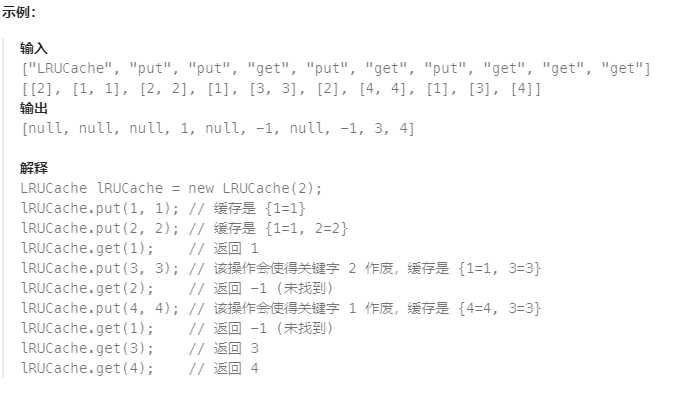Big-Yellow的算法工程师进阶之路
Big-Yellow的算法工程师进阶之路
一、基础算法
二、基础数据结构
2.1 链表[1]
2.1.1 基础理论
链表是一种以链的形式来存储数据的数据结构。链表的结构:每一个数据都与其后一个数据相连(有时候也与前一个数据相连)。链表中的每个元素都被称为一个结点, 在形状上链表就像自行车链条一样 一节接着一节
链表的优点
- 1、因为链表是一个链式的数据结构,你可以快速地添加和移除其中的元素。并且这也不需要像数组或者列表那样来重新组织数据。线性的数据结构用链表来实现更加容易。
- 2、同样因为它的链式结构,链表也不需要一个固定的或者初始的大小。
链表的缺点
- 1、与数组相比,链表占用更多的内存空间。这是因为你需要一个占用额外内存空间的指针来指向下一个元素。
- 2、在链表上执行搜索操作非常的慢。不像数组,你不能随机访问链表中的元素
链表使用
- 1、不知道数据列表中会有多少个元素(这是链表的一个优势 - 添加元素非常简单)。
- 2、不需要随机访问任何一个元素(与数组不同,你不能在链表中以一个特定的索引访问元素)。
- 3、要在数据列表的中间插入元素。
- 4、你需要以常数式时间从数据列表中插入和删除元素(与数组不同,你不需要先移动数据列表中的每一个其他元素)。
2.1.2 Python实现[2]
只需要意识到你将要添加到链表中的每一个元素都只是一个结点(就像链条中的一环)。头结点(链表中的第一个结点)的特殊之处在于你先确定一个头结点,然后再开始向它后面添加其他结点
1、单向链表****
- 创建链表
创建链表
class Node:
def __init__(self, val):
self.val = val # 存放数据
self.next = None # 指向下一个节点
- 定义链表
定义链表
class SingleLinkList(object):
"""单链表"""
def __init__(self):
self.head = None
def is_empty(self):
"""判断链表是否为空"""
return self.head is None
def length(self):
"""链表长度"""
cur = self.head
count = 0
while cur:
coun +=1
cur = self.head.next
return count
def item(self):
"""遍历链表"""
cur = self.head
while cur:
yield cur.val
# 指针下移
cur = cur.next
def add(self, val):
"""向链表头部添加节点"""
node = Node(val)
node.next = self.head
self.head = node
def append(self, val):
"""向链表尾部添加节点"""
node = Node(val)
if self.is_empty():
self.head = node
else:
cur = self.head
while cur.next:
cur = cur.next
cur.next = node
def insert(self, index, val):
"""指定位置插入元素"""
if index <0:
self.add(val)
else:
node = Node(val)
cur = self.head
for i in range(index- 1):
cur = cur.next
node.next = cur.next
cur.next = node
def remove(self, val):
"""删除节点"""
cur = self.head
pre = None
while cur:
if cur.next == val:
if not pre:
self.head = cur.next
else:
pre.next = cur.next
return True
else:
pre = cur
cur = cur.next
if __name__ == '__main__':
link_list = SingleLinkList()
# 向链表尾部添加数据
for i in range(5):
link_list.append(i)
# 向头部添加数据
link_list.add(6)
# 遍历链表数据
for i in link_list.item():
print(i, end='\t')
# 链表数据插入数据
link_list.insert(3, 9)
print('\n', list(link_list.item()))
# 删除链表数据
link_list.remove(0)
# 查找链表数据
print(link_list.find(4))
2.1.3 LeetCode习题
题目来源:
1、LeetCode官网
2、代码随想录
链表题解关键是断开连接然后去连接下一个,适当的临时节点(哨兵),防止后续指向不明确(不让指针迷路)
解决代码及思路
class Solution:
def reverseList(self, head: Optional[ListNode]) -> Optional[ListNode]:
"""问题一""""
pre, cur = head, None
while pre is not None:
tmp = pre.next
pre.next = cur
cur = pre
pre = tmp
return cur
def swapPairs(self, head: Optional[ListNode]) -> Optional[ListNode]:
"""问题二""""
if head is None or head.next is None:
return head
pre, cur = head, head.next
mind = pre.next.next
cur.next = pre
pre.next = self.swapPairs(mind)
return cur
def removeNthFromEnd(self, head: Optional[ListNode], n: int) -> Optional[ListNode]:
"""问题二
先把所有的点都丢到哈希表中,而后通过哈希表找到要删除的元素,而后删除
"""
pre = ListNode(0, head)
node = pre
index = 0
tmp_list = {}
while node:
tmp_list[index]= node
node = node.next
index +=1
tmp_list[index- n- 1].next = tmp_list[index- n].next
return pre.next
def getIntersectionNode(self, headA: ListNode, headB: ListNode) -> ListNode:
"""问题三
构建哈希表,把一个链表元素都丢到哈希表里面,然后去递归另外一个看看是否在设置的哈希表中
"""
preA, preB = ListNode(next=headA), ListNode(next=headB)
mapB = set()
while preB.next:
mapB.add(preB.next)
preB = preB.next
while preA.next:
if preA.next in setB:
return preA.next
preA = preA.next
return None
def detectCycle(self, head: Optional[ListNode]) -> Optional[ListNode]:
"""问题四
链表查找:还是哈希表,判断在/不在
"""
pre = head
map_list = set()
while pre:
if pre in map_list:
return pre
map_list.add(pre)
pre = pre.next
return None
2.2 哈希表
2.2.3 LeetCode习题
解决代码及思路
三、🐉LeetCode推荐习题
1、LRU缓存
🔗题目链接:https://leetcode.cn/problems/lru-cache/description/
📃题目描述:请你设计并实现一个满足LRU (最近最少使用) 缓存 约束的数据结构。实现LRUCache 类:
LRUCache(int capacity)以正整数作为容量capacity初始化LRU缓存int get(int key)如果关键字 key 存在于缓存中,则返回关键字的值,否则返回\(-1\)。void put(int key, int value)如果关键字 key 已经存在,则变更其数据值value;如果不存在,则向缓存中插入该组key-value。如果插入操作导致关键字数量超过capacity,则应该 逐出 最久未使用的关键字。
函数get和put必须以\(O(1)\)的平均时间复杂度运行。
️解题思路:定义一个字典 对象去对值进行存储,因为put或者get操作都会对存储的对象进行修改,因此在执行上述两步操作之后需要对循序进行修改。对于get操作就比较简单:只需要比较是否在字典存在,存在则返回值并且修改顺序,反之则输出null。(利用get函数即可)。对于put操作就复杂一点:首先判断是否存在:存在则需要将其放置都字典最后;不存在则需要判断是否超过了定义的capacity如果没有就直接加入即可,有的话就需要将字典第一个元素进行替换(对于获取字典第一个元素可以使用生成器iter(),生成器里面都是从最开始位置开始)。
问题描述

Code
class LRUCache:
def __init__(self, capacity: int):
self.capacity = capacity
self.data = dict()
def get(self, key: int) -> int:
s = self.data.get(key, -1)
if s != -1:
self.data.pop(key)
self.data[key]= s
return s
def put(self, key: int, value: int) -> None:
if key in self.data:
self.data.pop(key)
self.data[key] = value
else:
# 不在 data 里面的话:1、超过了容量,那么进行替代;2、没有超过容量:那么添加
if len(self.data) < self.capacity:
k = next(iter(self.data))
self.data.pop(k)
self.data[key] = value
else:
self.data[key] = value

